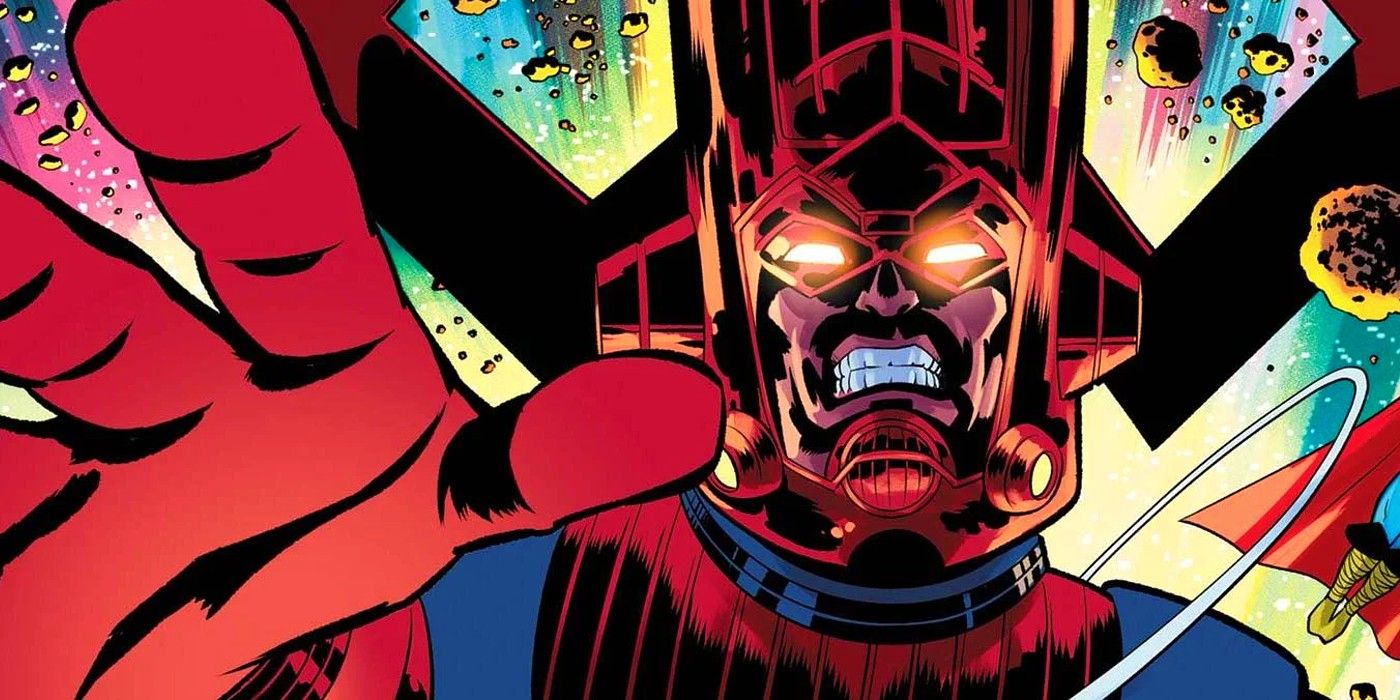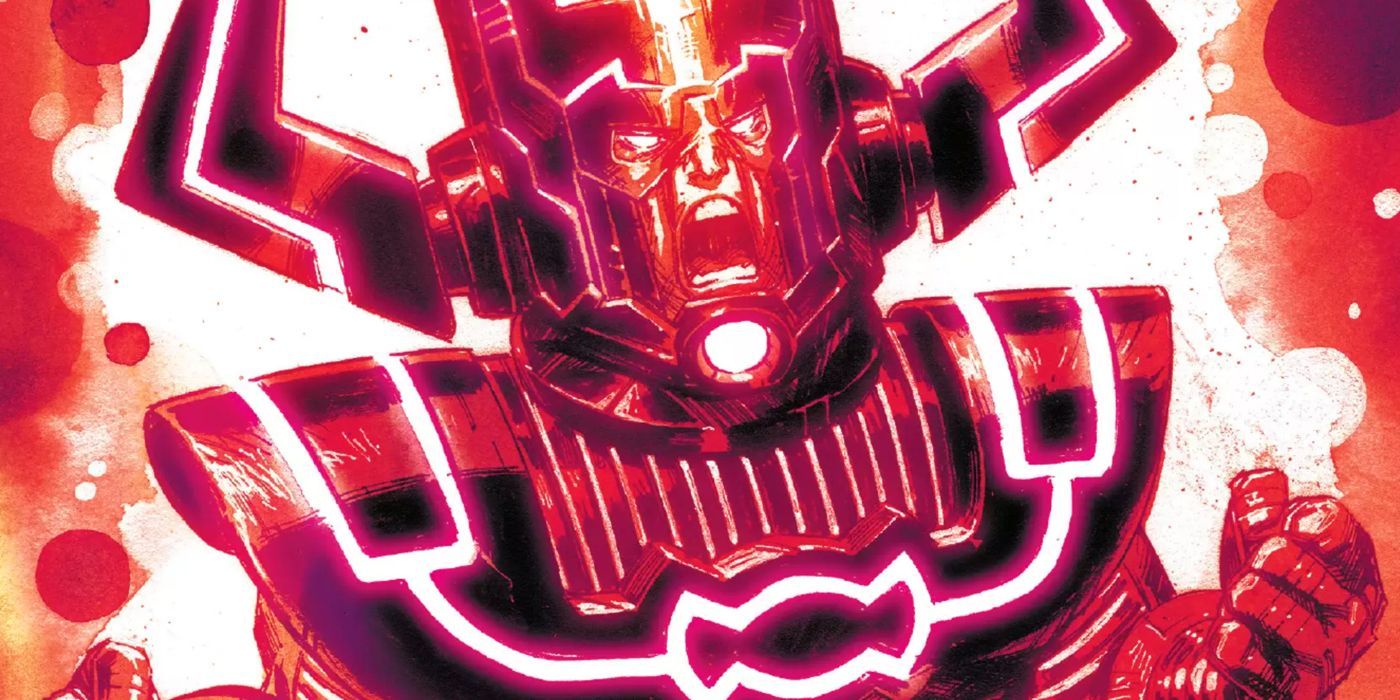Hyper-powered big-bads are no stranger to the Marvel Universe. What would a superhero story be without an intimidating villain? Thanos hijacks reality in the name of love, Mephisto ruins lives for fun, and Kang just wants to conquer. However, there is one big bad whose behavior is motivated by a deeper and more basic need than any other: Galactus.
Galactus consumes planets and converts their energy to keep himself alive. In short, he "eats" planets (albeit via complex machinery), motivated by a feeling which he himself describes as hunger. But Galactus isn't just a villain - he's a balancing force in the universe. First depicted in 1966's Fantastic Four #48, Galactus isn't actually a native of the Marvel Universe, but rather the last survivor of the sixth multiverse - yes, this vast cosmic power was once Galan of Taa, a normal, humanoid scientist who still remembers his former life.
Despite having once been human, Galactus is incomprehensible to the mortal mind. His form literally adjusts to whatever reality he's being perceived in. If you're a human, you see Galactus as a human, if you're a rat, you see Galactus as a rat, and so on throughout the known multiverse. In Fantastic Four #604, Galactus is shown to fight and beat back the Celestials, even managing to kill one, showing both his level of power and his role as a balancing force in the Marvel Universe. While this role was initially the explanation for his terrible hunger - that the universe needs a force to clear space for new worlds - his importance only grew in later stories.
Eventually, it became clear that Galactus was not just a force of destruction, but rather a repository of power which - at the end of the universe - would unleash the Big Bang, starting the next iteration of reality. This was confirmed in Mark Waid and Javier Rodriguez's History of the Marvel Universe, which expanded on the relationship between Galactus and Franklin Richards, who it's suggested will take some version of Galactus' role in the next iteration of the universe.
Readers have actually seen this side of Galactus in action in Al Ewing and Kenneth Rocafort's The Ultimates. Here, some of Marvel's biggest brains used Galactus' original incubator to turn him into the Lifebringer; a being capable of resurrecting entire planets by expending his stored energy. While Galactus was quickly return to his usual status quo, it was a clear look at Galactus' ultimate endgame and the necessity of the hunger that's made him such a huge threat to Marvel's Earth time and time again.
It's interesting to note that in this sense, Galactus' "hunger" isn't quite what it appears. While he does draw sustenance from destroying planets, it's clear that the majority of that energy doesn't actually go into sustaining Galactus, but rather into storage. This is why Galactus tends to work with a herald whose purpose is to make his travel to, and consumption of, planets more efficient - all of that energy is going to be reborn into the next universe, and whatever iota of it is wasted unnecessarily is likely to be lost forever. It's this knowledge that communicates the actual scale of Galactus in the Marvel Comics Universe, and why heroes like Reed Richards insist that he can only be managed, never truly defeated.


